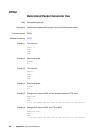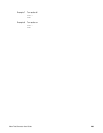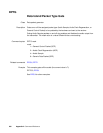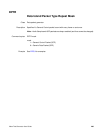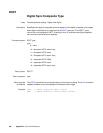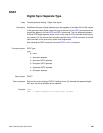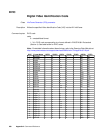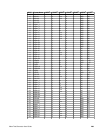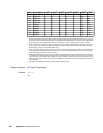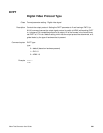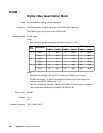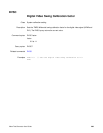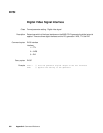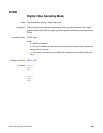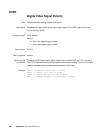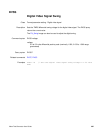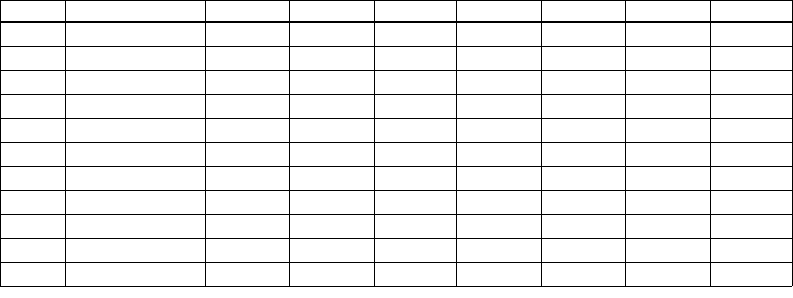
300 Appendix A Command Reference
Related commands XAVI (see VIC parameter),
Example
DVIC 23
FMTU
28 288p4xS2 1 A S H 0 2880 313
28 288p4xS3 1 A S H 0 2880 314
29 576p2x50 1 A N
0
A 0 720 625
29 576p2xLH 2 A L
cbb
H 0 720 625
30 576p2xSH 2 A S H 0 720 625
31 1080p50 1 H N
0
H 0 1920 1125
32 1080p23 1 H N
0
H 1 1920 1125
32 1080p24 1 H N
0
H 0 1920 1125
33 1080p25 1 H N
0
H 0 1920 1125
34 1080p29 1 H N
0
H 1 1920 1125
34 1080p30 1 H N
0
H 0 1920 1125
1. The generator treats double-clocking and pixel repetition as two totally separate items. NCPP controls the number of clocks
per pixel, while NPPP controls pixel repetition factor. All library formats set pixel repetition factor NPPP to zero (i.e. OFF) by
default. Double-clocking and pixel repetition cannot be applied simultaneously due to AVI:RP field constraints. Therefore, dou-
ble-clocked formats do not support pixel repetition. Pixel repetition is only applicable to the "4x" formats, where HRES remains
at 2880-pixels as the pixel repetition factor NPPP is varied between 1 and 10 - thereby varying the effective resolution.
2. EXCX and EXAR are not listed here, because all library formats set EXCX and EXAR equal to N0 and CXAR, respectively.
These values may be subsequently changed by rendering a special test image called "AFDtest", after the base format has
finished loading, in order to evaluate different AFD cases.
3. TUNE is a flag that indicates whether the frequencies of a format have been detuned or not. A value of one indicates that all
of the frequencies of a format have been tuned by a factor of 1/1.001 for NTSC compatibility. A value of zero, on the other
hand, indicates that the format has not been so tuned.
4. Double-clocked formats have the same horizontal resolution as single-clocked formats - the horizontal active (as we define it),
is not doubled in the double-clocked case. Some formats are distinguished by a horizontal active that is 4-times the normal
value of 720. Here, pixel repetition may be applied, by a special "PixelRep" test image, after the format has loaded. The "Pix-
elRep" test image allows the number of pixels-per-pixel (NPPP) to be varied and an image with repeated pixels to be rendered
for test purposes.
5. Some formats are distinguished by having a slightly different vertical line total.
DVIC Format Name NCPP
1
SXAR
2
SXEX
2
CXAR
2
TUNE
3
HRES
4
VTOT
5



